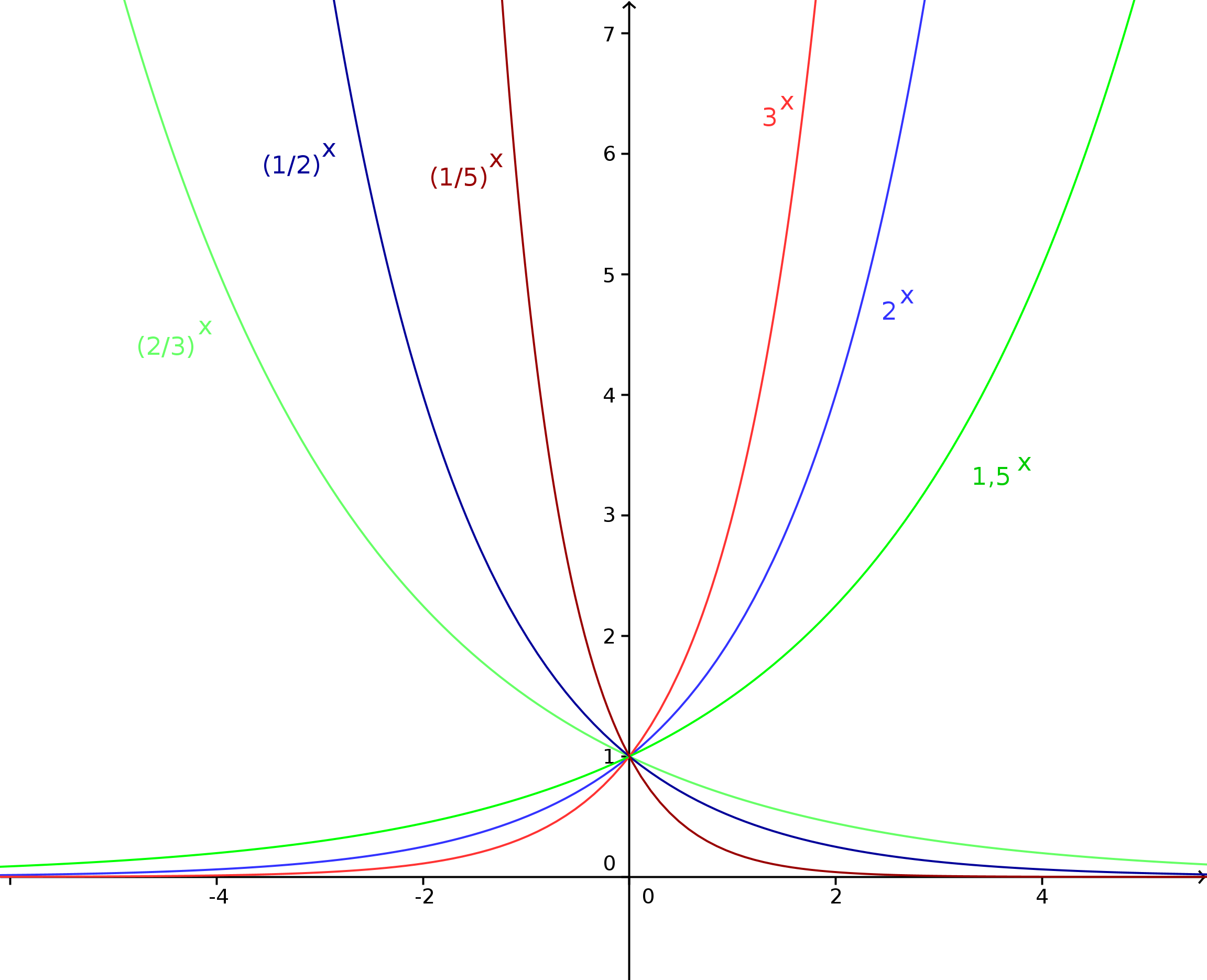Chapter 6 Elementary Functions
Section 6.4 Exponential and Logarithmic Functions6.4.2 Contents
In the previous example, an exponential function with base occurs, and the independent variable - in this example this is the variable - occurs in the exponent. We will now specify the general mapping rule for an exponential function with an arbitrary base ; however, we here assume :
Here, and denote so-called parameters of the exponential function that will be introduced below.
The domain of all exponential functions is the set of all real numbers, i.e. , whereas the range only consists of the positive real numbers, i.e. , since every power of a positive number can only be positive.
Exercise 6.4.2
Why it is assumed that the base of the exponential function is greater than zero?
Some general properties can be seen from the figure below showing exponential functions , for different values of :

- All these exponential functions pass trough the point , since and for every number .
- If , then the graph of rises from left to right (i.e. for increasing -values); one also says that the function is strictly increasing. The greater the value of , the steeper the graph of rises for positive values of . Moving towards ever larger negative values of (i.e. approaching from right to left) the negative -axis is an asymptote of the graph.
- If , then the graph of falls from left to right (i.e. for increasing -values); one also says that the function is strictly decreasing. The greater the value of , the slower the graph of falls for negative values of . Moving towards ever larger positive values of (i.e. approaching from left to right) the positive -axis is an asymptote of the graph.
then it can be seen that is a kind of starting point or initial value (at least if the variable is taken for a time); the exponential progression is generally multiplied by the factor and thus weighted accordingly, i.e. stretched (for ) or compressed (for ).
The parameter that occurs in the exponent is called growth rate; it determines how strong the exponential function - with the same base - increases (for ) or decreases (for ). The expression is called growth factor.
 Onlinebrückenkurs Mathematik
Onlinebrückenkurs Mathematik